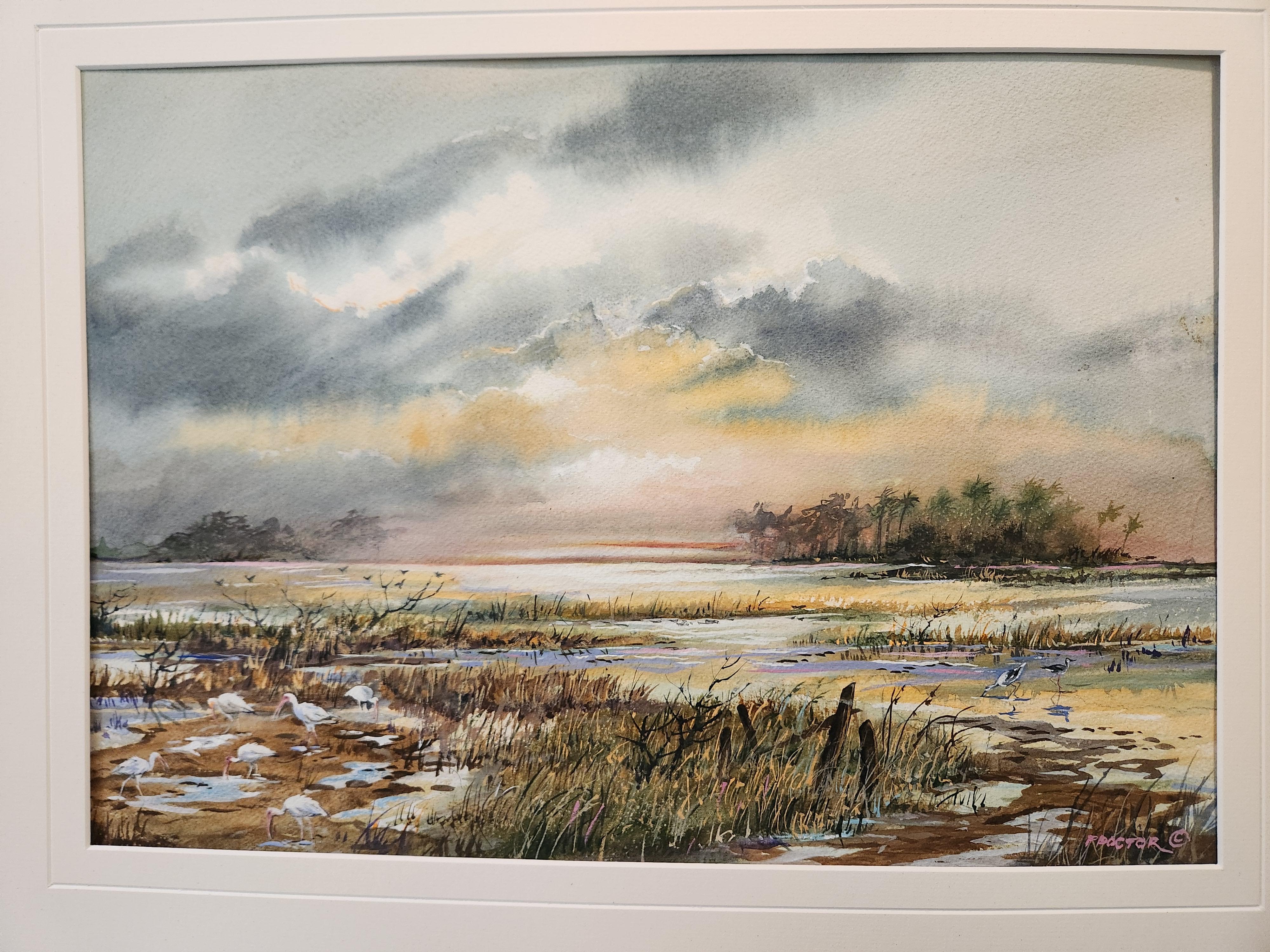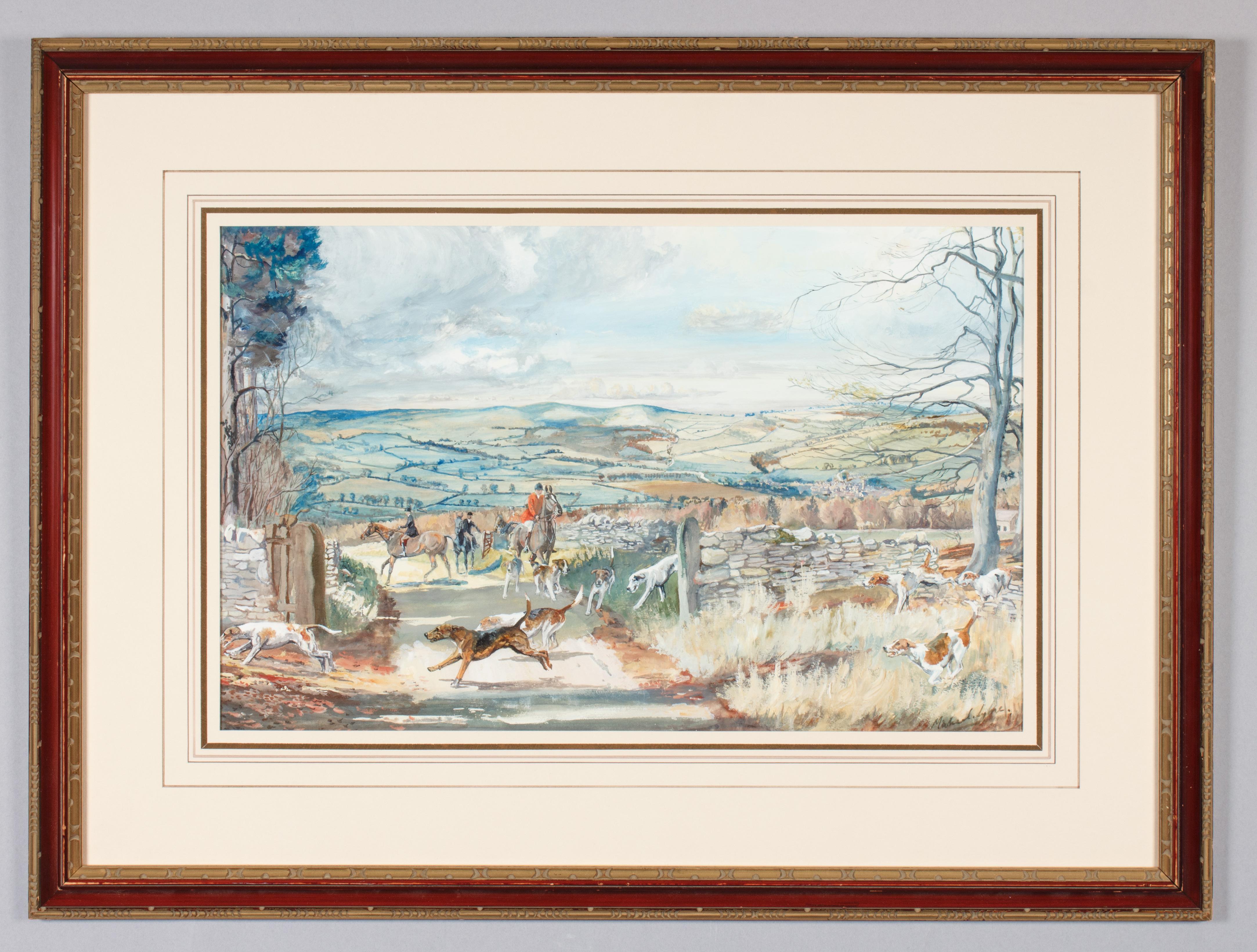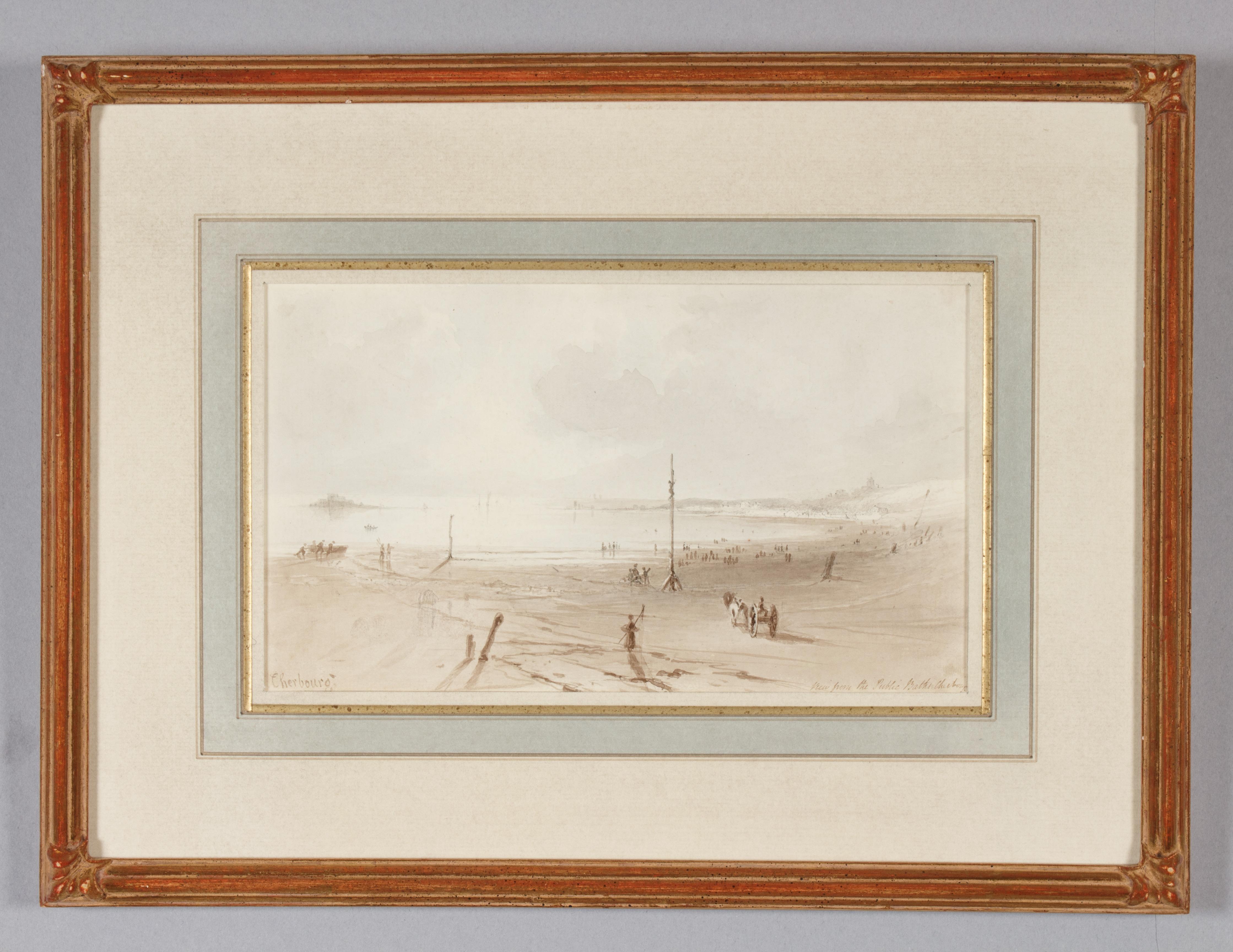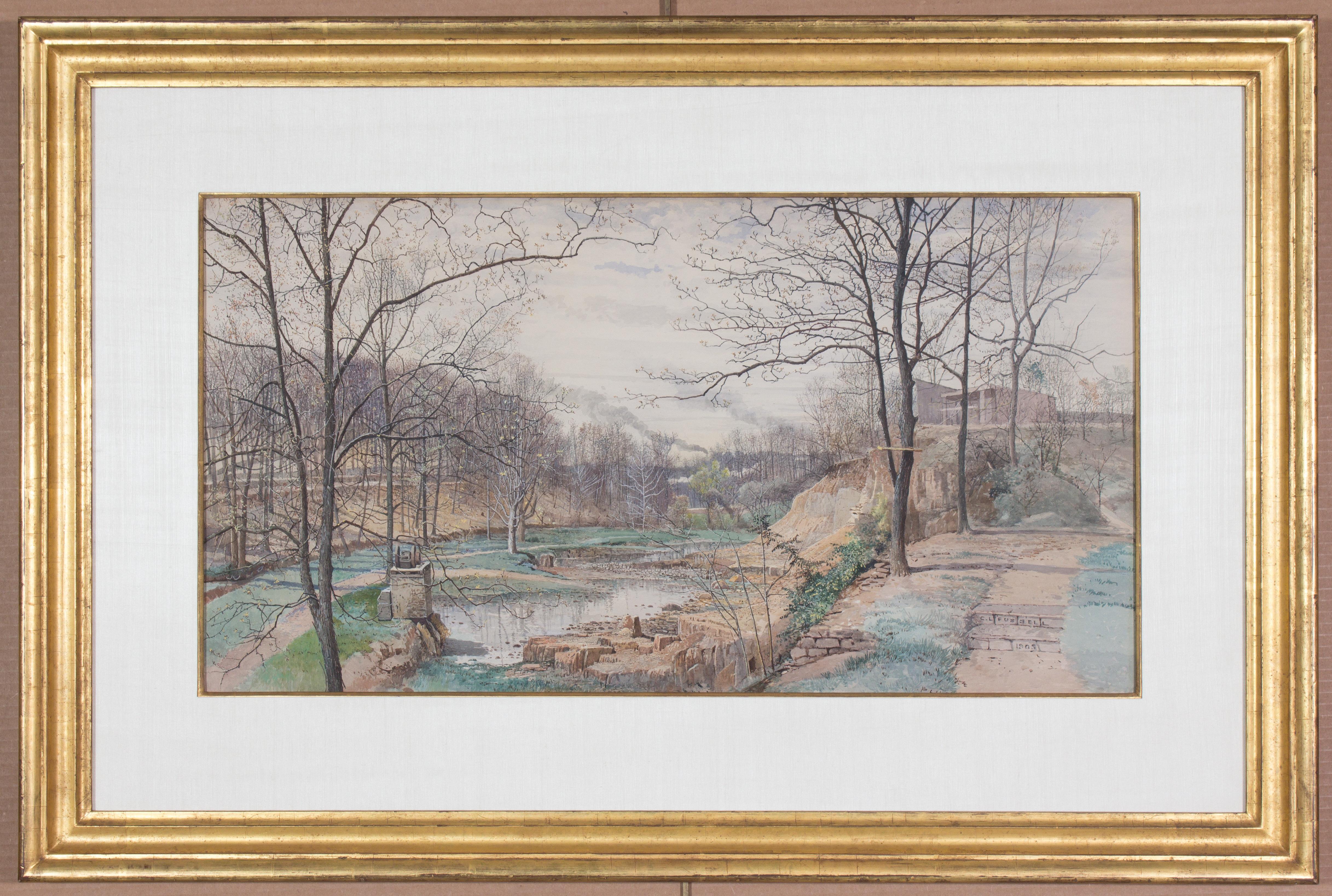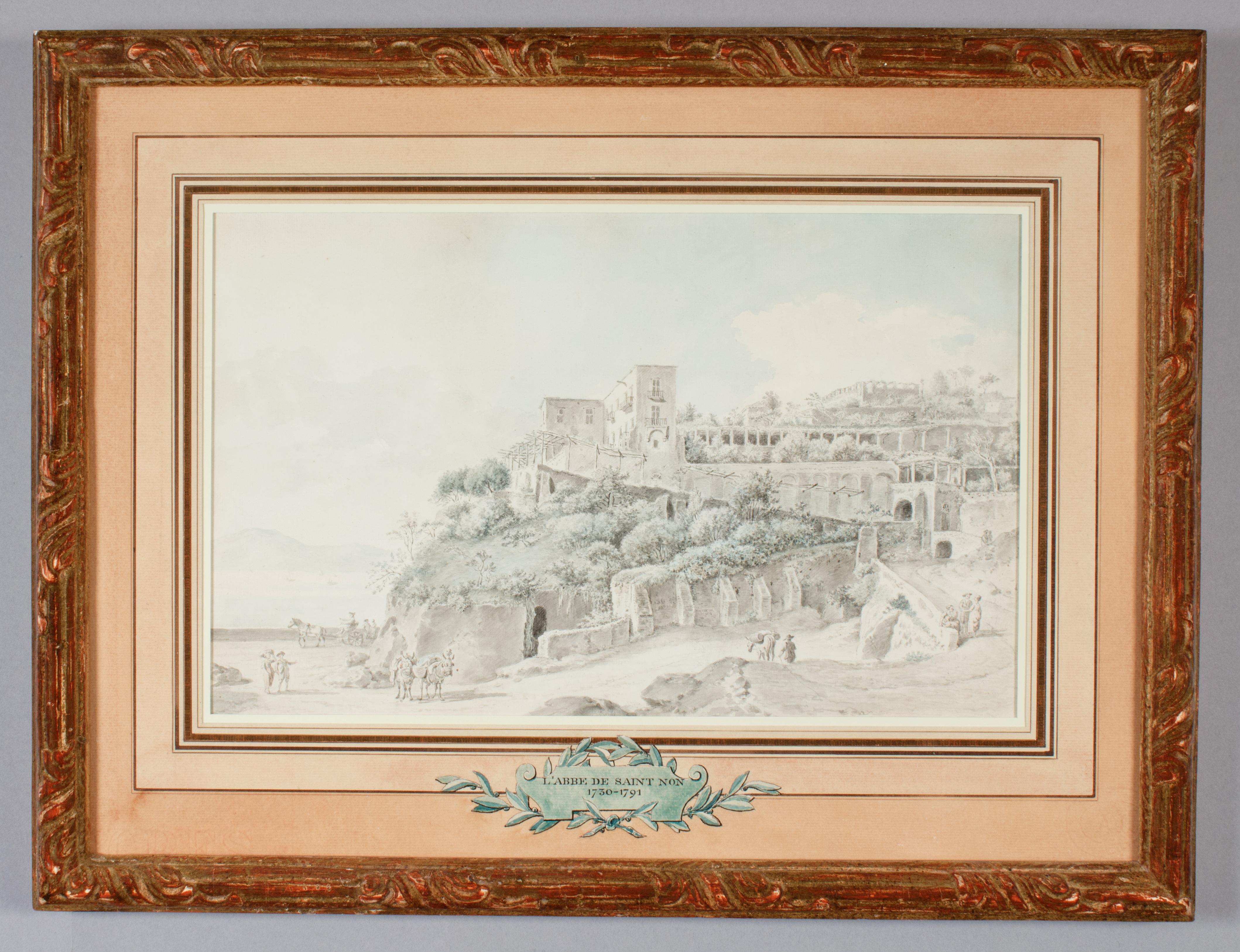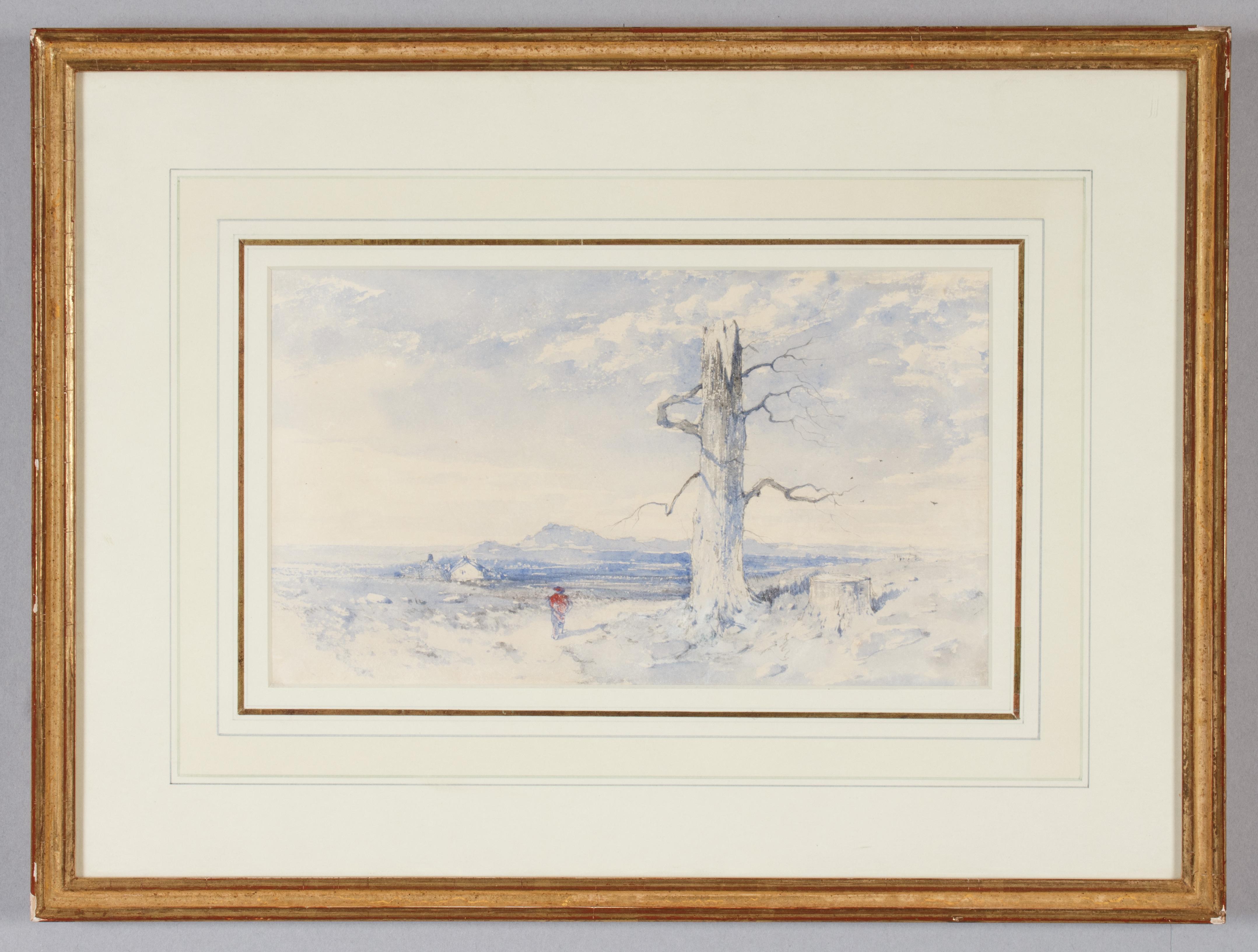Items Similar to Outgoing Fog (South Bristol, Maine)
Want more images or videos?
Request additional images or videos from the seller
1 of 8
Florian K. LawtonOutgoing Fog (South Bristol, Maine)1976
1976
About the Item
Watercolor on paper, 1976
Painted in South Bristol, Maine
Signed by the artist lower left
Condition: Excellent
- Creator:Florian K. Lawton (1921 - 2011)
- Creation Year:1976
- Dimensions:Height: 15 in (38.1 cm)Width: 22.875 in (58.11 cm)
- Medium:
- Movement & Style:
- Period:
- Condition:
- Gallery Location:Fairlawn, OH
- Reference Number:
About the Seller
5.0
Recognized Seller
These prestigious sellers are industry leaders and represent the highest echelon for item quality and design.
Platinum Seller
These expertly vetted sellers are 1stDibs' most experienced sellers and are rated highest by our customers.
Established in 1978
1stDibs seller since 2013
711 sales on 1stDibs
Typical response time: 1 hour
Associations
International Fine Print Dealers Association
- ShippingRetrieving quote...Ships From: Fairlawn, OH
- Return PolicyA return for this item may be initiated within 10 days of delivery.
More From This SellerView All
- untitled (Hillside in Spring)By William C. GrauerLocated in Fairlawn, OHuntitled (Hillside in Spring) Gouache on paper, c. 1965 Signed with the estate stamp lower right Provenance: Estate of the artist by decent William C. Grauer (1895-1985) was born in Philadelphia to German immigrant parents. After attending the Philadelphia Museum School of Industrial Art, Grauer received a four year scholarship from the City of Philadelphia to pursue post graduate work. It was during this time that Grauer began working as a designer at the Decorative Stained Glass Co. in Philadelphia. Following his World War I service in France, Grauer moved to Akron, Ohio where he opened a studio in 1919 with his future brother-in-law, the architect George Evans...Category
1960s Realist Landscape Drawings and Watercolors
MaterialsGouache
- Outgoing Fog (South Bristol, Maine)Located in Fairlawn, OHOutgoing Fog Watercolor on paper, 1976 Signed by the artist lower left Painted in South Bristol, Maine Condition: Excellent Watercolor size: 15 x 22 7/8 inches Frame size: 20 x 30 inches (aprox.) Florian...Category
1970s Realist Landscape Drawings and Watercolors
MaterialsWatercolor
- Italian CityscapeBy Victoria Hutson HuntleyLocated in Fairlawn, OHItalian Cityscape Pastel on Strathmore paper, 1968 Signed and dated lower right with the estate signature with the initials RH Image size: 13 3/4 x 10...Category
1960s Realist Landscape Drawings and Watercolors
MaterialsPastel
- UntitledLocated in Fairlawn, OHUntitled Watercolor on paper, c,. 1890 Unsigned Provenance: Estate of the artist Image/Sheet size: 3 1/4 x 4 1/8 inches From Wikipedia "Francis Augustus Lathrop (June 22, 1849 – Oct...Category
1890s American Impressionist Landscape Drawings and Watercolors
MaterialsWatercolor
- Horses Leaving the BarnBy Adolf DehnLocated in Fairlawn, OHHorses Leaving the Barn Watercolor on paper, 1940 Signed and dated lower left corner (see photo) Condition: Excellent Image: 14 1/2 x 21” Frame: 25” x 31” Provenance; Associated American Artists, New York (see photo of label) Mamdouha and Elmer Holmes Bobst Displayed in an original wormy chestnut frame with OP3 Acrylic. Most probably from the AAA Dehn watercolor exhibition of 1940. Vintage original framing chosen by the artist. Note: Elmer Holmes Bobst (1884–1978) was an American businessman and philanthropist who worked in the pharmaceutical industry. His wife, Mamdouha, was also well known philanthropist. Bobst was born in Lititz, Pennsylvania. He aspired to become a doctor, but instead, he taught himself pharmacology. After his wife Ethel composed his interview letter, he became manager and treasurer of the Hoffman-LaRoche Chemical Works by 1920. When Bobst retired from the company in 1944, he was one of the nation's highest paid corporate executives. In 1945 he took charge of the ailing William Warner Company (later Warner–Lambert) and he remained board chairman until his retirement. Bobst had close connections to President Dwight Eisenhower, but was also a close friend of President Richard Nixon. Note: In 1940, the year of this watercolor, Dehn and Elizabeth Timmerman visited Waterville, MN on their way to Colorado Sprint, Colorado where Dehn was to teach lithography and watercolor. This watercolor is obviously a view of the area around Waterville. Adolf Dehn, American Watercolorist and Printmaker, 1895-1968 Adolf Dehn was an artist who achieved extraordinary artistic heights, but in a very particular artistic sphere—not so much in oil painting as in watercolor and lithography. Long recognized as a master by serious print collectors, he is gradually gaining recognition as a notable and influential figure in the overall history of American art. In the 19th century, with the invention of the rotary press, which made possible enormous print runs, and the development of the popular, mass-market magazines, newspaper and magazine illustration developed into an artistic realm of its own, often surprisingly divorced from the world of museums and art exhibitions, and today remains surprisingly overlooked by most art historians. Dehn in many regards was an outgrowth of this world, although in an unusual way, since as a young man he produced most of his illustrative work not for popular magazines, such as The Saturday Evening Post, but rather for radical journals, such as The Masses or The Liberator, or artistic “little magazines” such as The Dial. This background established the foundation of his outlook, and led later to his unique and distinctive contribution to American graphic art. If there’s a distinctive quality to his work, it was his skill in introducing unusual tonal and textural effects into his work, particularly in printmaking but also in watercolor. Jackson Pollock seems to have been one of many notable artists who were influenced by his techniques. Early Years, 1895-1922 For an artist largely remembered for scenes of Vienna and Paris, Adolf Dehn’s background was a surprising one. Born in Waterville, Minnesota, on November 22, 1895, Dehn was the descendent of farmers who had emigrated from Germany and homesteaded in the region, initially in a one-room log cabin with a dirt floor. Adolf’s father, Arthur Clark Dehn, was a hunter and trapper who took pride that he had no boss but himself, and who had little use for art. Indeed, during Adolf’s boyhood the walls of his bedroom and the space under his bed were filled with the pelts of mink, muskrats and skunks that his father had killed, skinned and stretched on drying boards. It was Adolf’s mother, Emilie Haas Dehn, a faithful member of the German Lutheran Evangelical Church, who encouraged his interest in art, which became apparent early in childhood. Both parents were ardent socialists, and supporters of Eugene Debs. In many ways Dehn’s later artistic achievement was clearly a reaction against the grinding rural poverty of his childhood. After graduating from high school in 1914 at the age of 19—an age not unusual in farming communities at the time, where school attendance was often irregular—Dehn attended the Minneapolis School of Art from 1914 to 1917, whose character followed strongly reflected that of its director, Munich-trained Robert Kohler, an artistic conservative but a social radical. There Dehn joined a group of students who went on to nationally significant careers, including Wanda Gag (later author of best-selling children’s books); John Flanagan (a sculptor notable for his use of direct carving) Harry Gottlieb (a notable social realist and member of the Woodstock Art Colony), Elizabeth Olds (a printmaker and administrator for the WPA), Arnold Blanch (landscape, still-life and figure painter, and member of the Woodstock group), Lucille Lunquist, later Lucille Blanch (also a gifted painter and founder of the Woodstock art colony), and Johan Egilrud (who stayed in Minneapolis and became a journalist and poet). Adolf became particularly close to Wanda Gag (1893-1946), with whom he established an intense but platonic relationship. Two years older than he, Gag was the daughter of a Bohemian artist and decorator, Anton Gag, who had died in 1908. After her husband died, Wanda’s mother, Lizzi Gag, became a helpless invalid, so Wanda was entrusted with the task of raising and financially supporting her six younger siblings. This endowed her with toughness and an independent streak, but nonetheless, when she met Dehn, Wanda was Victorian and conventional in her artistic taste and social values. Dehn was more socially radical, and introduced her to radical ideas about politics and free love, as well as to socialist publications such as The Masses and The Appeal to Reason. Never very interested in oil painting, in Minneapolis Dehn focused on caricature and illustration--often of a humorous or politically radical character. In 1917 both Dehn and Wanda won scholarships to attend the Art Students League, and consequently, in the fall of that year both moved to New York. Dehn’s art education, however, ended in the summer of 1918, shortly after the United States entered World War I, when he was drafted to serve in the U. S. Army. Unwilling to fight, he applied for status as a conscientious objector, but was first imprisoned, then segregated in semi-imprisonment with other Pacifists, until the war ended. The abuse he suffered at this time may well explain his later withdrawal from taking political stands or making art of an overtly political nature. After his release from the army, Dehn returned to New York where he fell under the spell of the radical cartoonist Boardman Robinson and produced his first lithographs. He also finally consummated his sexual relationship with Wanda Gag. The Years in Europe: 1922-1929 In September of 1921, however, he abruptly departed for Europe, arriving in Paris and then moving on to Vienna. There in the winter of 1922 he fell in love with a Russian dancer, Mura Zipperovitch, ending his seven-year relationship with Wanda Gag. He and Mura were married in 1926. It was also in Vienna that he produced his first notable artistic work. Influenced by European artists such as Jules Pascin and Georg Grosz, Dehn began producing drawings of people in cafes, streets, and parks, which while mostly executed in his studio, were based on spontaneous life studies and have an expressive, sometimes almost childishly wandering quality of line. The mixture of sophistication and naiveté in these drawings was new to American audiences, as was the raciness of their subject matter, which often featured pleasure-seekers, prostitutes or scenes of sexual dalliance, presented with a strong element of caricature. Some of these drawings contain an element of social criticism, reminiscent of that found in the work of George Grosz, although Dehn’s work tended to focus on humorous commentary rather than savagely attacking his subjects or making a partisan political statement. Many Americans, including some who had originally been supporters of Dehn such as Boardman Robinson, were shocked by these European drawings, although George Grocz (who became a friend of the artist in this period) admired them, and recognized that Dehn could also bring a new vision to America subject matter. As he told Dehn: “You will do things in America which haven’t been done, which need to be done, which only you can do—as far at least as I know America.” A key factor in Dehn’s artistic evolution at this time was his association with Scofield Thayer...Category
1940s American Realist Landscape Drawings and Watercolors
MaterialsWatercolor
- Spring Landscape with house and figureBy Louis Oscar GriffithLocated in Fairlawn, OHSpring Landscape with house and figure A preliminary watercolor for a color aquatint, illustrated on line, title unknown Signed lower left in block letters (see photo) Watercolor and...Category
1920s American Impressionist Landscape Drawings and Watercolors
MaterialsWatercolor
You May Also Like
- IBISBy W Stanley ProctorLocated in Tallahassee, FLOriginal. Serene.Category
21st Century and Contemporary Realist Landscape Drawings and Watercolors
MaterialsWatercolor
- North Cotswold Hounds on Sudeley Hill: a watercolor by Michael LyneBy Michael LyneLocated in Philadelphia, PAMichael Lyne (English, 1912-1989) North Cotswold Hounds on Sudeley Hill, 1934 Gouache on paper, 11 3/4 x 18 1/2 inches Signed and dated at lower right: "Michael Lyne/34" Inscribed in...Category
1930s Realist Landscape Drawings and Watercolors
MaterialsPaper, Watercolor
- View from the Public Baths, Cherbourg, FranceLocated in Philadelphia, PAPercival Skelton (English, active 1852-87) Cherbourg Watercolor on paper, 5 3/8 X 9 3/8 inches Framed: 11 x 15 inches (approx.) Inscribed at lower left: "Cherbourg"; at lower right: ...Category
Mid-19th Century Realist Landscape Drawings and Watercolors
MaterialsPaper, Watercolor
- Watercolor View from Gayley Street, Media Pennsylvania, 1905Located in Philadelphia, PACharles Lewis Fussell (American, 1840–1909) View from Gayley Street, Media PA, 1905 Watercolor on paper, 13 1/2 x 23 3/4 inches Framed: 25 1/2 x 35 3/4 (approx.) Signed and dated a...Category
Early 1900s Realist Landscape Drawings and Watercolors
MaterialsPaper, Watercolor
- Mount Posillipo Near the Tomb of Virgil, Naples, 1779Located in Philadelphia, PAJean-Claude-Richard de Saint Non (French, 1727-1791) Mount Posillipo Near the Tomb of Virgil, Naples, 1779 Watercolor on paper, 15 x 20 inches Inscribed on verso: (in pencil) "l ' A...Category
1770s Realist Landscape Drawings and Watercolors
MaterialsWatercolor, Paper
- Watercolor of Cumberland, England by English Artist William James BlacklockLocated in Philadelphia, PAWilliam James Blacklock (English, 1816-1858) Rural Landscape, Watercolor on paper, 5 7/8 x 7 7/8 inches Framed: 15 x 18 inches (approx.) Inscribed on verso: (in pencil) "Heath sce...Category
Mid-19th Century Realist Landscape Drawings and Watercolors
MaterialsPaper, Watercolor
